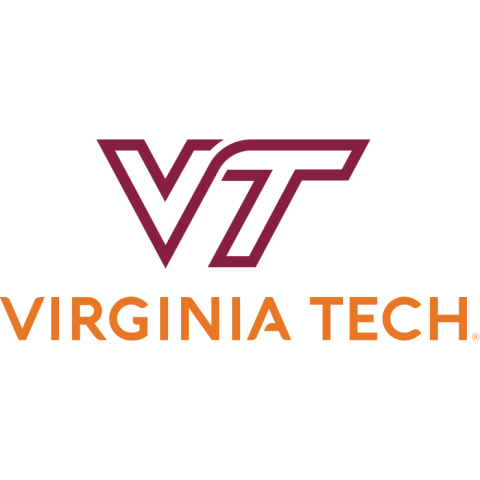
What a transdisciplinary lens brings to university teaching
Why is it important to integrate knowledge and methodologies across disciplines? Catherine Amelink has recommendations to encourage the student engagement needed to address complex, weighty problems
Interdisciplinarity
Sponsored by

Advice for bringing together multiple academic disciplines into one project or approach, examples of interdisciplinary collaboration done well and how to put interdisciplinarity into practice in research, teaching, leadership and impact
You may also like
Popular resources
Interdisciplinary teaching requires students to learn a subject from multiple perspectives, encourages them to think critically, and be mindful of their own biases and respectful of ethical quandaries. It offers a more complete understanding of a given issue.
However, I believe we should go one step further and teach through a transdisciplinary lens. Transdisciplinary teaching integrates disciplines, ensuring that learning happens in the context of real-world problems. This type of teaching should also include non-academic stakeholders – societal partners. In transdisciplinary teaching, diverse perspectives provide a broader, more nuanced understanding of a subject.
Why take an inter- and transdisciplinary approach?
In the US, higher education’s traditional model of broad study in a range of disciplines has shifted towards in-depth study within a special area of interest. Specialisation has allowed researchers to delve more deeply into their areas of expertise – and helped produce many of our greatest achievements. But siloed disciplinary fields have also separated academic courses of study, and we now realise that the silo model isn’t well calibrated for today’s challenges. Complex challenges such as climate change, public health crises and technological ethics mandate insights from multiple disciplines and a a variety of perspectives.
And when higher education professionals build out the path to graduation in fields such as civil engineering, health administration or architectural design, our goal is to create future leaders and problem-solvers who are ready to synthesise knowledge and offer a holistic understanding of the most important issues we face.
- Spotlight guide: A focus on interdisciplinarity in teaching
- Interdisciplinarity makes us greater than the sum of our parts
- For truly practical learning, embrace an interdisciplinary approach
An inter- and transdisciplinary approach to education allows students to develop advanced critical thinking and problem-solving abilities. They learn to identify connections and patterns that might be overlooked in a single-discipline approach. And we know that employers seek graduates who can collaborate across fields, adapt to dynamic roles and contribute to innovative solutions, as well as the empathy and communication skills that such tasks require. The collaborative projects that we use in transdisciplinary teaching help students learn to value other people’s perspectives. Relatedly, gleaning intersecting ideas from multiple disciplines often sparks creativity and innovation in students, meaning they are better positioned to make breakthroughs in science, technology and society.
How to implement an inter- and transdisciplinary approach
Implementing inter- and transdisciplinary teaching in universities requires strategic planning and leadership commitment. Leadership plays a pivotal role in creating an environment where these methods can thrive.
Here’s how universities can implement such an approach:
- Leadership commitment and vision Leaders set the tone and direction for institutional priorities. When university leaders actively endorse inter- and transdisciplinary teaching, it becomes a core element of the institution’s identity rather than a niche practice. This should be clearly articulated in strategic plans and other leadership communications.
- Structural and policy support Structural barriers – such as rigid departmental silos – can dampen collaboration among departments and units. One way around this is to create interdisciplinary centres or programmes. At Virginia Tech, we have the Center for Excellence in Teaching and Learning, through which faculty can find funding to explore innovative practices and connect to pedagogical support and other faculty who are interested in this space. Another technique is to support pilot implementations of transdisciplinary courses. As an illustration, in our Honors College, the SuperStudio brings students and external stakeholders together to look at complex problems.
- Transdisciplinary curricula Techniques here include having faculty design inter- and transdisciplinary courses as part of general education requirements; requiring students to complete interdisciplinary projects; engaging in team teaching – pairing faculty from different disciplines to co-teach classes. For example, in a class addressing urban sustainability, instructors from engineering, sociology, environmental science and public policy might participate in teaching, allowing students to tackle design solutions that are technically feasible, socially inclusive and environmentally sound. Another technique is for faculty to use case studies in class that present complex scenarios with technical, ethical, economic and social aspects, encouraging students to analyse the problem from different angles and from the perspective of varied stakeholders.
Teaching through an inter- and transdisciplinary lens can encourage students to develop critical thinking and problem-solving skills, adaptability, empathy and a holistic understanding of complex issues. These are increasingly key in an interconnected professional landscape – and more and more sought after by employers.
By adapting the techniques outlined here and fully committing to inter- and transdisciplinary education, university leaders can transform institutions into hubs of innovation and collaboration, better preparing students for the work, life and service challenges of the 21st century.
Catherine Amelink is associate vice-provost in the Office of the Executive Vice-Provost and director of the Center for Excellence in Teaching and Learning at Virginia Tech. She facilitates the university-wide Destination Area initiative to advance transdisciplinary research and learning and is co-editor of Global Insights into Transdisciplinary Higher Education Initiatives (Virginia Tech Publishing, 2025).
If you’d like advice and insight from academics and university staff delivered direct to your inbox each week, sign up for the Campus newsletter.
Interdisciplinarity
Sponsored by





Comments (0)
or in order to add a comment